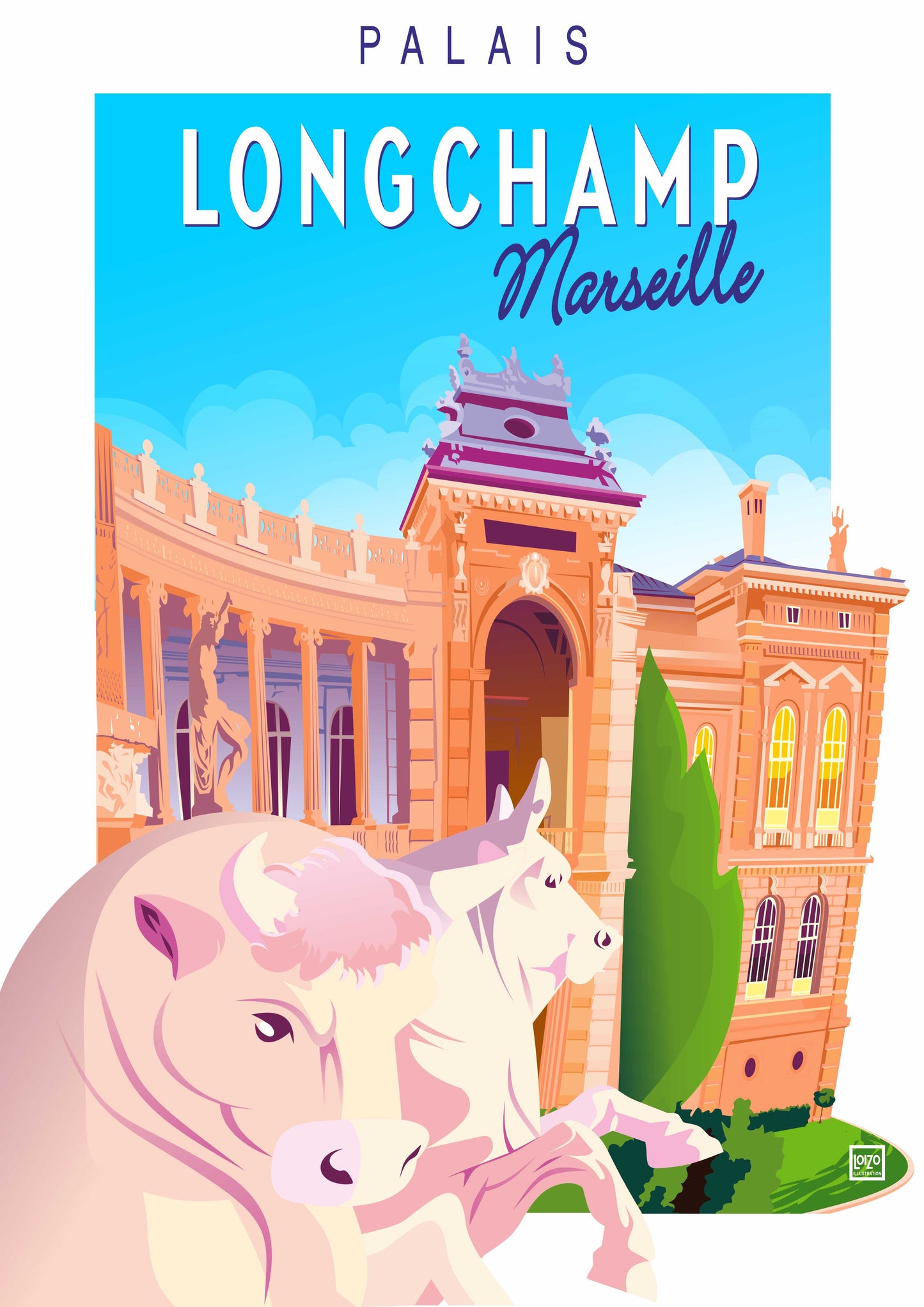Marseille "Palais Longchamp"
laurent loiseau
Couldn't load pickup availability
Original Loizo illustration, NEW PAPER 270gr Lithographic type.
Signed by the artist and dry stamp of origin affixed.
Located in the Cinq Avenues district, the Palace was built in 1862 by the municipality to celebrate the arrival of the waters of the Durance River in the city, via the Marseille Canal. Work on the Palace was directed by the architect Henri-Jacques Espérandieu and completed in 1869 for budgetary reasons. It was inaugurated on August 14 of the same year and opened to the public the following day, August 15, the feast day of Emperor Napoleon III.
Beneath its circular colonnade, the Palace houses two museums: the Museum of Fine Arts in its left wing and the Museum of Natural History in its right wing. The Palace gardens also housed a zoo until 1987. They currently house the Marseille Observatory.
Architecture
A water tower, surrounded by a garden and waterfalls, the Palais Longchamp was designed as a true hymn to water:
The glory of the Durance's waters is marked by the young woman in the center, and her companions symbolize fertility: wheat and vines. Behind her, chubby children carry sheaves of wheat and bunches of grapes, and the bas-reliefs of the triton scene recall the Baroque style.
The building's rich decor evokes the abundance and fertility brought by the canal's waters. Sculpture plays a prominent role. The renowned animal sculptor Antoine Louis Barye created the lions and tigers at the entrance. The monumental fountain at the center of the colonnade is the work of Jules Cavelier.
The interior decor of the museums is also remarkable. The grand staircase of the Museum of Fine Arts is adorned with two large canvases commissioned in 1867 from Puvis de Chavannes (Marseille, Greek Colony and Marseille, Gate of the Orient).
The museum has preserved, with the Provence room painted by Raphaël Ponson, a very fine example of ancient museography.
The Museum of Natural History
The Natural History Museum has been housed in the right wing of the palace since 1869. Its collections earned it a "first category" classification in 1967, along with nine other major French museums. Since then, it has been under the supervision of the Ministry of National Education, Higher Education and Research, headed by a state curator.
Over nearly two centuries, the Natural History Museum has collected invaluable evidence of natural heritage, which it makes available to the public and scientists in the zoology, osteology and prehistory rooms, as well as in the Provence Room.
The Observatory
Today, it is a processing center for data obtained from the world's largest telescopes and major space experiments, as well as an instrument development laboratory. The main research themes are focused on the study of galaxies and the interstellar medium.
Since January 2000, the Observatory has expanded to become, with the "Space Astronomy Laboratory" at Trois Lucs in Marseille, the Haute Provence Observatory and the Marseille Provence Astronomical Observatory within the University of Provence.
In addition to its research activities, the Observatory is open to the public and schools and regularly offers astronomy dissemination activities.
The Museum of Fine Arts
Housed in the left wing of the Palace, the Museum of Fine Arts houses paintings, sculptures and drawings from the 16th to the 19th century.
Frame not included
FREE SHIPPING ON PURCHASES OVER €60!





